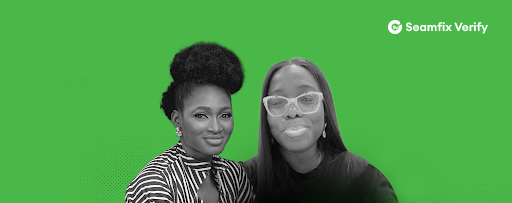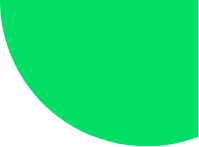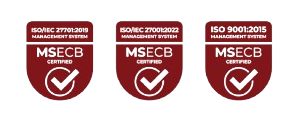Music conductors in an orchestra work with different people to create beautiful sounds. It’s similar to the work of a product manager, as they work with others who bring different expertise. The end goal is to build valuable products for customers and the business.
Product managers also look into the business data to understand their customers, the technology, the industry and how the business is evolving.
We sat down recently with two of Africa’s best product managers who build unique products at the continent’s fintech giants. Here’s some of their expert advice on scaling products for the African customer.

L-R: Yarmirama Ashama and Yemisi Alabi
How do you build and scale a product in a low-trust market like Africa?
Yemisi: I always start with extensive research. For instance, Africa has particular nuances you must be aware of. As I research and document my thoughts, I consult developers to determine technical requirements or constraints. Then write out the next steps, it helps that I can also design, so I do that on Figma to sketch what it can look like.
I lean extensively on my network for building products. Usually, I’d have three sessions with senior product developers, designers, and developers.
For another product, we went through a series of ideations. You can’t over-emphasize the amount of research that’s required. To build something solid, you must have fleshed out the idea. You must be willing to discard your perception for the truth of what your research shows you.
It’s foundational in building a product – leveraging your relationships. Especially if you’ve built social capital
Build – Ideate – Don’t be afraid to scrap it – Build again – link to your network – Push to market.
Yarmi: The Cowryise model is a great template to follow. There are things we do now that we did not do at first. For example, we didn’t start with KYC or an SEC license. But as we evolved with more customers and features, we had to evolve our standards with it as well. So you don’t need to go all out from the very beginning.
So the question is, what’s the bare minimum you can implement without being at risk with regulations and compliance? And would it also still give your customers a sense of security? You start with this, get a few customers, and then learn from it.
You learn about the gaps and how to close them. So, one thing at a time, depending on your stage, you solve your security problems continually. Security and user experience are never-ending challenges for scaling products in Africa.
How do you approach product changes from a customer perspective and business-wise?
Yemisi: For starters, an essential skill for product managers is clarity of thought. It helps you see things holistically from a builder and a customer perspective.
If you observe a packed space, drill down to needs and pain points that will help you connect with users. I’m a curious person. Why is this thing working? Why is it not? What’s happening in the market, checking the data, the analytics, what can we do here and there? Sustaining market share is one of the most giant jobs of a PM, to sustain revenue and customer loyalty.
For some products, you must physically see how people interact with the app. From time to time, observe patterns from friendly users to see how to improve them. Sometimes, numbers and data don’t tell the whole story. Nuance from observation and experience tells a better story. All that information helps you scale, not data in isolation, as the contextual view is lost. Customer experience and data go hand in hand so you can make informed decisions on your product.
Yarmi: When building products, ensure they’re valuable for customers. We don’t build for the sake of it. For example, when we created the ‘Emergency plan’ at Cowrywise, it was based on feedback from customers who requested a fallback plan from the long-term savings option.
So, in essence, what they were asking for was the opportunity to break the current long-term plan. As a product manager, when a customer makes a request, you have to look beyond the surface as they say and dig in to understand their actual need and how best to solve it, all while keeping the business’s vision in perspective.
So, in our case at Cowrywise, though we knew our customers loved the initial long-term plan, we also realised we could build an emergency product where they could withdraw while still achieving the primary goal they set out to achieve.
Building products could come from meeting customer needs on request or based on the needs we identify as a company.
How do you balance meeting security requirements and financial inclusion?
Yemisi: Financial inclusion is a separate conversation from security because of the innovation required and the dynamics at play. For example, if an NGO wants to distribute money to Internally displaced person camps and ensure the money gets to them, how do you make sure it does? How many have identities on devices or accounts that can be tracked?
You have to sit and study what’s possible. Agency networks and POS are some of the finest innovations in Nigeria because access to cash is minimal. To verify or authenticate those kinds of people, they must be onboarded to a system that requires adoption.
So, we need to think of an identity system that they would own and remember and can be assimilated into a retrievable data system. That’s the only way towards financial inclusion.
It always starts from the beginning, from scratch. It’s vital. For example, OTP can be used across other industries. It can be used in place of security questions, for instance. So whatever you’re building, think of it from a security perspective and as devices evolve, so will the dynamics of security and authentication become easier.
User experience and security can co-exist and be incorporated from scratch.
Yarmi: We play in a heavily regulated industry and deal with people’s money, so we must be very hands-on, know who’s who, and keep proper books on them.
Part of what we leverage to balance security and experience is a User’s BVN to verify a user’s identity details from their name and financial details. We use that for KYC regulations.
To help customers get accustomed to some of the required changes that security demands, you should layer on a service they already use to the introduced feature. For example, when we needed to introduce BVN verification to our product, we added it to the existing Stash feature, which required users to have a bank account on Cowrywise.
We also did a lot of educational content within and outside the app to help ease the transition so people could learn about the importance of the feature. From a product perspective, giving context is essential. as everyone can move forward faster when the objective is clear.
Also, the process of banking the unbanked is not as easy as it should be. But there’s a market for savings. For example, it’s much easier to save funds without the protocols of a bank system. So, there’s some progress in making financial services accessible to customers.
While you may not see many people using digital banks in rural areas, you’d also find them turning to POS systems, agent banking and other banking forms outside the bank office’s walls.
Generally, the industry is still evolving to make financial services more available to people.
Finally, what’s your best-kept secret for Product Managers in Africa?
Yarmi: Sometimes, it’s hard to show your work as a product manager compared to a designer or developer, so it’s easy to doubt your value. Finding ways to document your work is essential to reference it, even on the craziest days easily.
Yemisi: Invest in yourself, invest in knowledge and apply yourself. As a designer, I did not need to learn to code. But I learned it, and now I know how long it should take to do some specific projects in Frontend, so when I work with developers, and they estimate the padded time, I can tell it shouldn’t take this long.
If you’re starting in product management, take some courses in product school. I gave myself a target. I was reading four articles on product and scrum every day. So, set bold targets for yourself, even when entering a new industry. For example, I would give myself a target of three case studies a week and then think of how it applies to the current market in Nigeria.
Communities are also super important as they can provide mentoring that could propel your career in more ways than one, mainly regarding decision-making and career growth.
And when seeking a mentor, seek to do the work first to be a mutually beneficial relationship.











